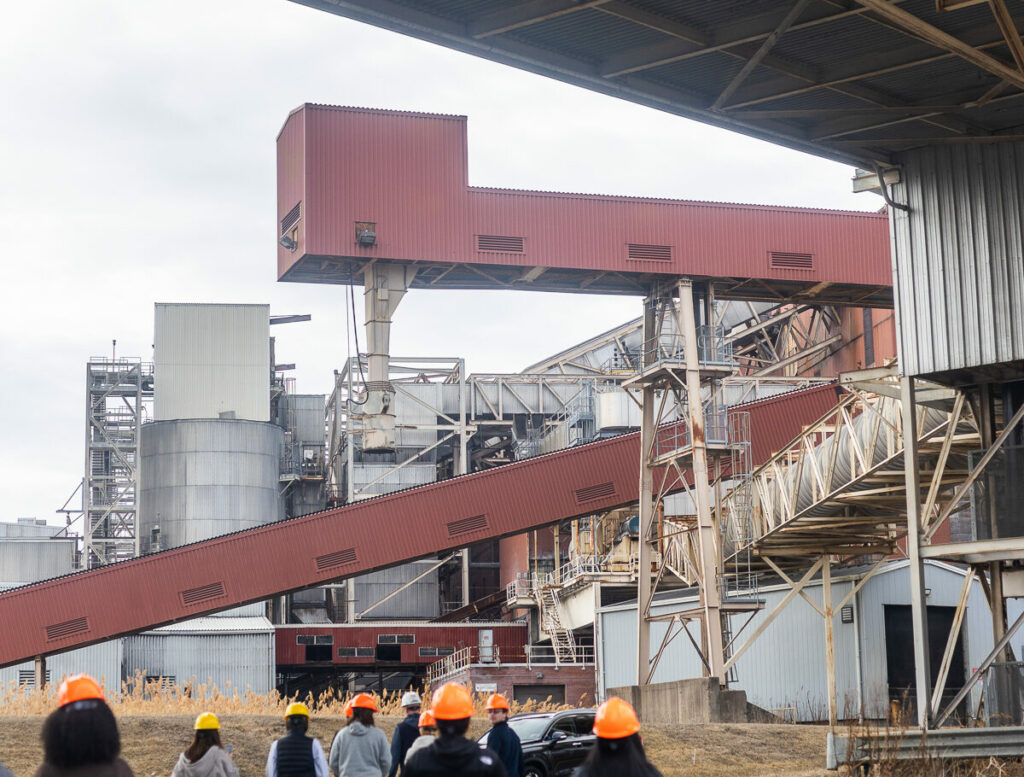Founded in 1635 by English Puritan settlers, Hartford, Connecticut became one of New England’s most prominent cities upon its settlement. Situated along the Connecticut River and densely populated with immigrants from across the world, the city became a national trade hub and industrial powerhouse from the 18th to the early 20th century, hosting manufacturing centers such as Colt’s Firearms. In the 1920s, a coal fired electric plant was constructed in Hartford’s South End neighborhood (MIRA Dissolution Authority, 2023). After around 50 years of energy production, the site was turned into a waste management plant known as the Connecticut Resources Recovery Authority (CRRA) in order to address the state’s growing trash disposal issues. In 1988, the CRRA began to operate as a waste-to-energy plant, converting solid waste into electricity through an incinerator-burn practice. In 2017, the CRRA was rebranded as the Material Innovation and Recycling Authority (MIRA) in hopes of reflecting the state’s mission of recycling and sustainability (MIRA Dissolution Authority, 2023).
The MIRA incinerator produced air pollution as a byproduct of the waste-incineration process. While this is an expected consequence associated with waste management, the geographical location of the plant in the South End neighborhood of Hartford introduced another factor: racial injustice. Hartford’s South End is one of the state’s most diverse neighborhoods, with a majority of its population identifying as Latino or Black. Additionally, the South End is one of Connecticut’s poorest neighborhoods, with a median family income of $53,234, compared to a national average of $77,538 (U.S. Census Bureau, 2023). The South End is also classified as an “Environmental Justice Community” by the Connecticut General Statutes. Environmental justice Communities are defined as: “populations or communities that are disproportionately impacted by effects of climate change, pollution, and environmental hazards… and are at a much higher risk of experiencing adverse health outcomes” (Connecticut Department of Energy and Environmental Protection, 2024).

This connection between pollution-producing waste-to-energy plants like the MIRA incinerator and their proximity to low income, racially diverse neighborhoods is not an accident (Bullard, 2000). Across the country, communities of color are burdened with waste management problems since wealthy, majority white suburban residents hold greater political influence and are thus able to keep waste-management facilities away from their residences. Residents in the South End have been deeply affected by the pollution from the MIRA incinerator, as seen through higher percentages of asthma, potent odors, and lower life expectancies (Pellico & Skahill, 2023). Additional health concerns arose when a landfill in the North End of Hartford was expanded to receive ash generated from the MIRA incinerator (Hartford Courant, 2019). A health assessment survey funded by the EPA found two types of pollution, SO2 and PM2.5, that directly correlate to respiratory problems in the city. In Hartford, 35% of the sulfur dioxide comes from point sources of pollution, while 27% comes from the MIRA incinerator (Stewart et al., 2015). These harms disproportionately impact residents of color. Respondents in the health assessment study were 26% Hispanic, 18% White, and 53% Black American, reflecting population demographics in Hartford. The statistics are clear, demonstrating the correlation between respiratory illness in Hartford and point sources like the MIRA incinerator, directly impacting the BIPOC residents living within the city (Stewart et al., 2015).
Those operating the MIRA incinerator faced a number of issues that eventually led to its closure in 2022. Mechanical failures, energy market forces, and outdated materials prevented the plant from passing state inspections, which required it cease operation. With its largest waste management site shut down, Connecticut faces a number of issues. First, the state now has only two major waste management sites and must outsource its waste disposal to Ohio and Pennsylvania, until it can find a solution to independently handle state-wide waste production (Pellico & Skahill, 2023). Second, under the Public Act of 23-170, Connecticut is now in charge of remediating the land from the decommissioned MIRA incinerator and other related buildings (MIRA Dissolution Authority, 2024). More than $56 million in leftover funds from MIRA were placed into a reserve that is currently handled by the MIRA Dissolution Authority (MDA), a board of representatives tasked with the closure of the plant (MIRA Dissolution Authority, 2024, MIRA Dissolution Authority, 2023). Stakeholders ranging from environmental justice groups to housing development companies are fighting for control of the land to exercise their respective projects.
In a report commissioned by the MDA, there are currently three proposed future uses of the MIRA site (MIRA Dissolution Authority, 2025):
- Industrial/Commercial
- Residential/Recreation
- Mixed use


The three plans differ regarding whether or not the MIRA incinerator would be fully or partially demolished. Costs for all of these projects are high, ranging between $37.56 million to $450 million. A prominent Hartford advocacy group, The Center for Leadership and Justice, is currently advocating for the future use of the reserve fund and supporting Hartford resident voices as to the future of the land.